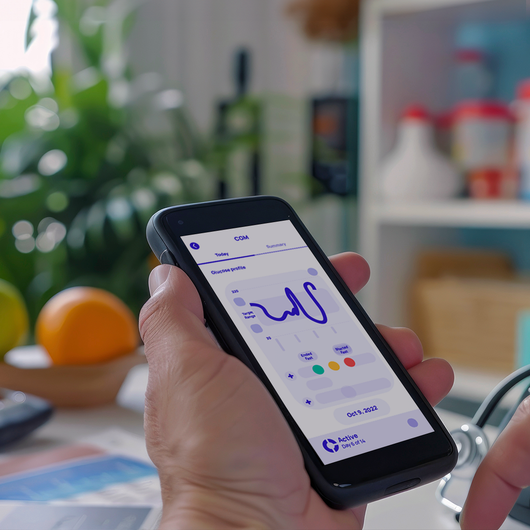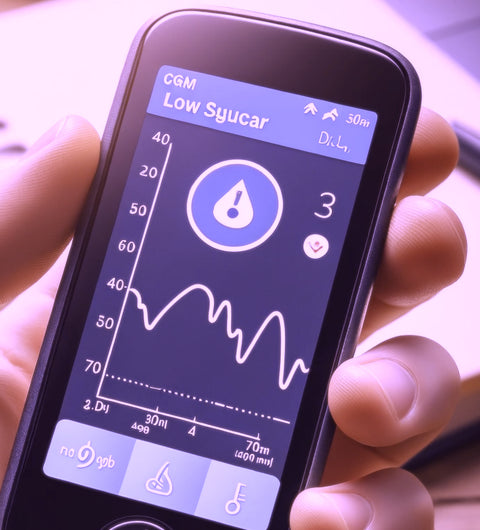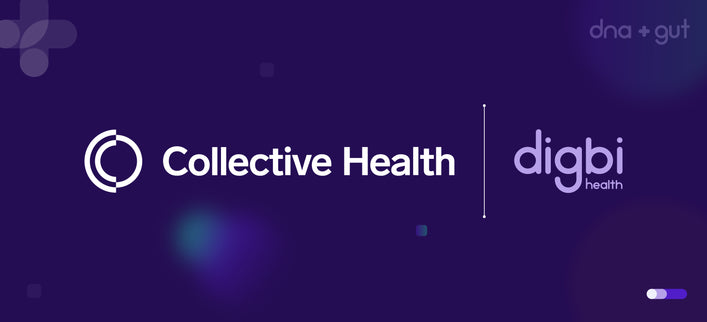Welcome to Digbi Health!
Welcome to Digbi Health! As a new member, you're embarking on a journey towards better health using advanced tools like Continuous Glucose Monitors (CGMs). This guide will help you understand how to use the data from your CGM to improve your health, particularly if you are pre-diabetic, overweight, or have Type 2 Diabetes (T2D).
This guide is not meant to help you put on the sensor or connect it to the Digbi App. It assumes you have already completed these steps, for which you will find instructions in the Digbi App.
Understanding CGM Data
What is CGM?
A Continuous Glucose Monitor (CGM) tracks your glucose levels throughout the day and night, providing real-time data on how your body responds to various foods, activities, and other factors.
Why Use CGM?
Personalized Insights: Understand how different foods and activities affect your glucose levels.
Proactive Management: Identify and address glucose spikes before they become a problem.
Improved Health Outcomes: Use data to make informed decisions that support weight loss, better metabolic health, and diabetes management.
Key Numbers and Ranges to Focus On
Understanding your glucose data is crucial for effective management. Here are the key numbers and ranges to keep an eye on:
1. Fasting Glucose Levels:
Definition: Fasting glucose levels refer to the amount of glucose in your blood after not eating for at least 8 hours. It provides a baseline measure of your body's glucose regulation without the influence of recent food intake.
- Normal Range: 70-100 mg/dL
- Pre-Diabetes Range: 100-125 mg/dL
- Diabetes Range: 126 mg/dL and above
2. Post-Meal Glucose Levels (1-2 hours after eating):
- Target Range: Below 140 mg/dL
- Elevated Range: 140-199 mg/dL (indicates pre-diabetes)
- High Range: 200 mg/dL and above (indicates diabetes)
3. Time in Range (TIR):
- Goal: Spend at least 70% of the time in the target range of 70-180 mg/dL.
- Benefit: Higher TIR is associated with better overall glucose control and reduced risk of complications.
4. Glucose Variability:
- Goal: Maintain stable glucose levels with minimal fluctuations.
- Benefit: Reducing variability helps prevent glucose spikes and crashes, leading to more consistent energy levels and better overall health.
How Digbi Uses ND Score to Rate Meals
1. ND Score Explained:
The ND (Nutrient Density) score rates your meals based on their glucose response. A higher score indicates a more favorable glucose response.
Points are deducted if your glucose levels peak above 140 mg/dL or if they do not return to pre-meal levels within 2 hours.
2. Importance of Connecting the Sensor to the Digbi App:
Data Integration: Ensure your CGM is connected to the Digbi App to sync your glucose data automatically.
Meal Photos: Share photos of your meals in the Digbi App to receive accurate ND scores and personalized feedback.
Continuous Improvement: Use the feedback from the ND scores to adjust your meals and improve your glucose responses over time.
Your Goal with CGM Data
If you are pre-diabetic or have T2D, your goal is to work with your Digbi Health coach to improve your glucose control one step forward in 60 days. This involves:
Using ND Score Guidance: Follow the ND score feedback to make better food choices.
Exercise Post-Eating: Incorporate light activities, such as a short walk, after meals to help manage post-meal glucose spikes.
Better Sleep: Aim for 7-9 hours of quality sleep per night.
Lower Stress: Practice stress reduction techniques like meditation, deep breathing, or yoga.
Practical Tips for CGM Users
Log Your Meals and Activities
Keep a detailed log of your meals, snacks, and physical activities. Note the time and type of food consumed, portion sizes, and any significant activities. This will help you correlate specific actions with changes in your glucose levels.
Review Data Regularly
Review your CGM data regularly to stay informed about your glucose patterns. Use the insights to make proactive changes to your diet and lifestyle.
Stay Hydrated
Drink plenty of water throughout the day. Hydration plays a key role in glucose regulation and overall health.
Consult with Health Professionals:
Check-in regularly with your Digbi Health coach to discuss your CGM data and any concerns or questions. They can provide personalized advice and adjustments to your plan.
Insurance Coverage for CGM
Your insurance program covers:
- 1 CGM sensor (2 weeks) if it is Abbott.
- 3 CGM sensors (30 days) if it is Dexcom.
If you wish to continue using the CGM beyond this period, you can purchase additional sensors directly via the Digbi App.
Conclusion
Using a CGM is a powerful tool in managing your health journey, especially for those who are pre-diabetic, overweight, or have T2D. By tracking your glucose trends, optimizing your diet, incorporating physical activity, managing stress and sleep, and making data-driven adjustments, you can take control of your health and achieve your wellness goals. Welcome to a healthier you with Digbi Health!







